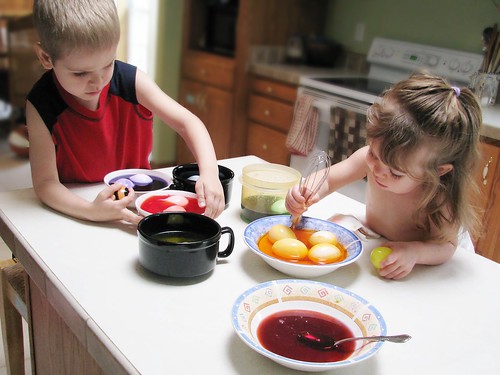Guest Post: 10 Simple Ways to Teach Kids Math in the Kitchen
Little learning opportunities for some extra education can be found everywhere for parents and children alike. If you’re trying to teach your preschooler some basic math functions, or helping your young mathematician sharpen her skills, you may need look no further than your own kitchen for a potential classroom.
Here are ten simple ways you can teach your kids math in the kitchen:
- Recipes – measurements involved with preparing recipes often require adjusting the prescribed amounts in order get the number of servings you need for your family. This is a great opportunity to impart some valuable multiplication or division skills.
- Measuring cups – Your child can learn how various measurements relate to one another, and learn some pointers about fractions too. Show him how many tablespoons are in an ounce, and then let him figure out how many tablespoons he’ll need for x number of ounces.
- Receipts – An ideal tool for demonstrating addition, your grocery store receipts can be used as practice for your child to see if she can add everything up and match the right “answer”. This could also provide the opportunity to teach your child the use of a calculator and about percentages with the sales tax.
- Coupons – Your kid can learn some financial tips to go with some exercises in subtraction by figuring out the family’s savings by clipping coupons. Let her work out the differences between prices with and without the savings.
- Geometry – Slicing a pizza, cake or a tray of brownie squares is a great way to demonstrate not only division, but how objects are measured. Four brownies times nine brownies equal 36 square brownies. Subtract two for testing to get 34 total. Every good food geometry lesson needs room for a taste test!
- Calendar – The calendar on the fridge can help a child understand the number of days in a week, month or year. Learning how to determine dates by counting the number of days, or using multiples of seven, is a valuable skill.
- Microwave Math – A child can learn to count backwards by following along on a microwave timer. She can also learn how to tell time, how many seconds are in a minute, and how many minutes are in an hour. Let her figure out what time it will be when a dish is ready by adding the cooking time to the clock time.
- Counting Calories – Nutritional information on packaging shows different data, such as the number of calories per serving. Let him figure out how many servings are in the package, then figure out the total calories for the entire package.
- Thermometers – Using kitchen thermometers with multiple scales can help your child learn how Fahrenheit temperatures relate to Celsius and vice versa. Demonstrate boiling and freezing points using the stove and the freezer.
- Let your child divide up servings of a food item like cookies, carrot sticks, or grapes into equal parts. Setting the table and dividing up servings helps demonstrate the relationships between numbers in a practical way
Author
Carrie Dotson, regularly writes for http://www.summernannyjobs.
